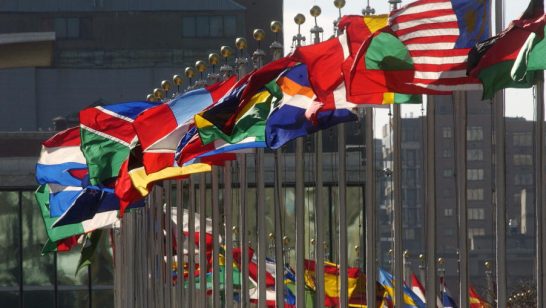
Article republished after visit by G7 foreign ministers to Hiroshima on 11 April 2016
Expectations were high that the commemoration of the 70th anniversary of the bombing of Hiroshima as well as this year’s Nuclear Non Proliferation Treaty (NPT) Review Conference would offer two major opportunities to make progress on the path towards nuclear disarmament and non-proliferation. In reality, both events were a disappointment. At the NPT Review Conference in New York, it was impossible to reach a consensus on an action plan that would have guided the Treaty’s implementation over the coming five years. The rejected draft of the final document contained nearly 200 paragraphs devoid of priorities and operational provisions. Sadly, due to regional controversies, it was impossible to even include the word “Hiroshima” into the aborted draft.
This year’s 70th anniversary of Hiroshima was also a missed opportunity. It would have been a major occasion to solemnly acknowledge the catastrophic humanitarian consequences of the use of nuclear weapons. The expected high level participation did not materialize but resembled that of previous years, with the notable exception of a representative of the United States government coming from the capital. As Undersecretary of State for Arms Control and International Security Rose Goettemoeller’s presence together with the US Ambassador to Japan, Caroline Kennedy, gave testimony to the United States’ “moral responsibility to act” as the first and only user of nuclear weapons, as acknowledged by President Obama in his 2009 speech in Prague.
The disappointing Hiroshima anniversary was followed a few days later by the commemoration of the bombing of Nagasaki. Being the second city to be bombed in 1945 and with a lower number of victims, the Nagasaki commemoration attracts less attention. Although the use of plutonium made the Nagasaki bomb more powerful, its impact was lower due to the protection offered by the hills surrounding the point of impact. However Nagasaki retains the unique status of being the last target against which an atomic device was used.
Some attribute this achievement of non-use to the effectiveness of the doctrine of nuclear deterrence. Others believe that good luck rather than deterrence has guaranteed seven decades without military nuclear catastrophes. Several considerations indicate the fragility of the nuclear deterrence doctrine. A number of worrying episodes of near-nuclear accidents, the growing number of nuclear actors, and the risk of WMDs falling into non-state hands, all show that the world is walking on thin ice. 16,000 warheads still remain in nuclear weapons states’ hands, some on hair-trigger alert, and can still destroy the planet several times over. All nuclear weapons states are modernizing their arsenals and some of the political leaders in charge of these states are more belligerent than their predecessors. With the exception of the US and the UK, no nuclear actor has improved or broadened its assurances not to use nuclear weapons against non-nuclear weapons states. The territorial integrity of Ukraine was violated in spite of the tripartite assurances by the UK, France and Russia that this wouldn’t happen if Kiev renounced nuclear weapons. Countries living under a nuclear umbrella have a better chance of escaping such a fate but they run the risk of becoming themselves the targets of nuclear attacks. All in all, unpredictability is greater than it was in the past. The fact that nuclear deterrence has worked for 70 years is no guarantee that it will continue to do so in the future.
Achieving a world without nuclear weapons is the evident optimal solution and all possible paths must be undertaken to reach that goal. Despite the gloomy general picture, the historic agreement on a Joint Comprehensive Plan of Action on Iran’s nuclear program stands as this year’s outstanding accomplishment. Maximum efforts should now be made to prevent the US from withdrawing from an international agreement it so masterfully crafted. Isolating itself from its allies and from the overwhelming majority of the international community would be a self-inflicted wound. There are also indications that China would now be ready to ratify the Treaty prohibiting nuclear testing without waiting for the US to go first. Such a demonstration of leadership should be strongly encouraged.
While every year it is important to commemorate Hiroshima and Nagasaki and to celebrate 70 years of non-use of nuclear weapons, political and spiritual leaders of the highest stature should personally participate in these events. That would lend maximum visibility to the commemoration and make these leaders directly aware of their responsibilities for the catastrophic consequences of any future use of nuclear weapons. In particular, they should be reminded that the survival of humanity cannot continue by relying on good luck.
The opinions articulated above represent the views of the author(s), and do not necessarily reflect the position of the European Leadership Network or any of its members. The ELN’s aim is to encourage debates that will help develop Europe’s capacity to address the pressing foreign, defence, and security challenges of our time.


